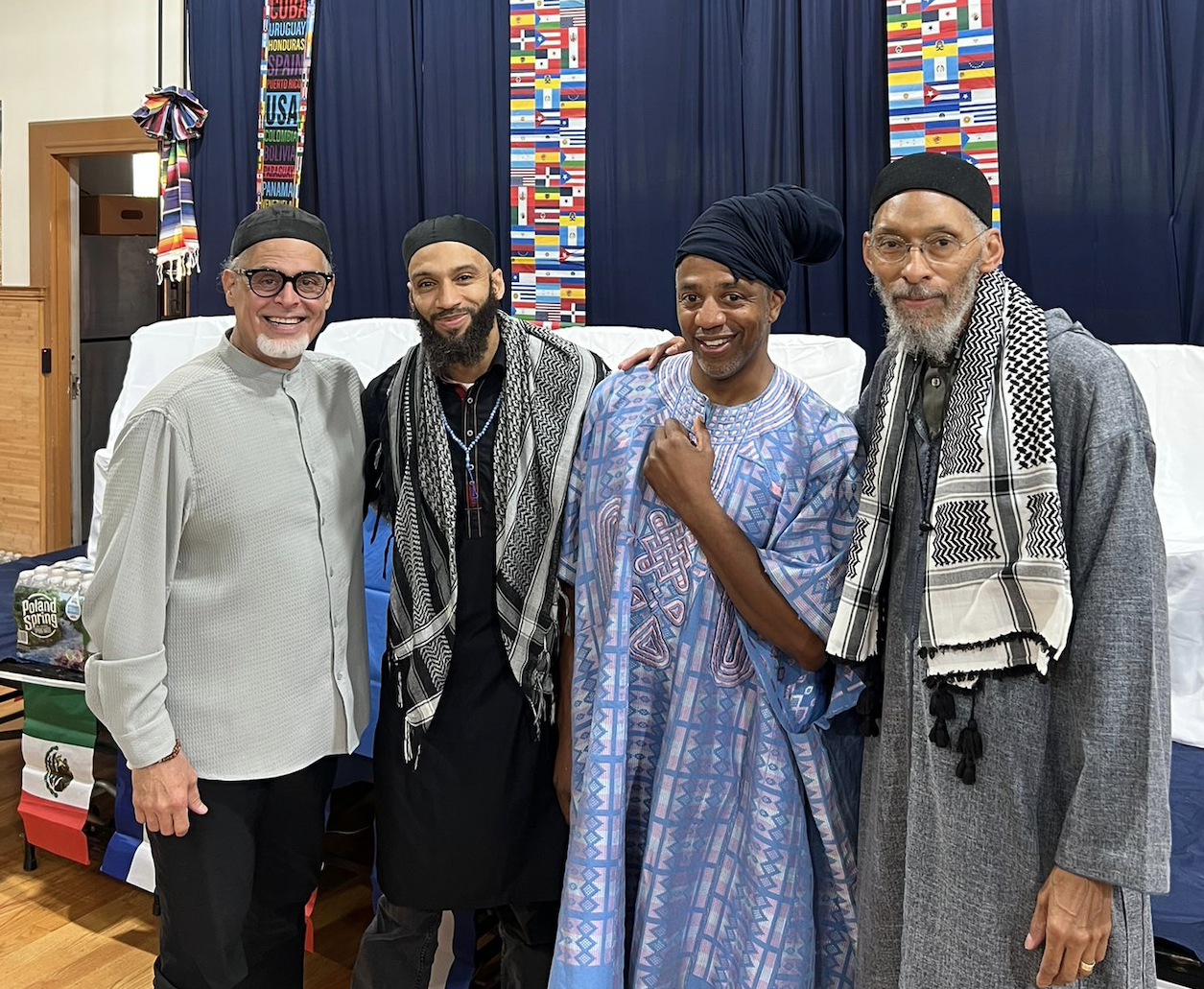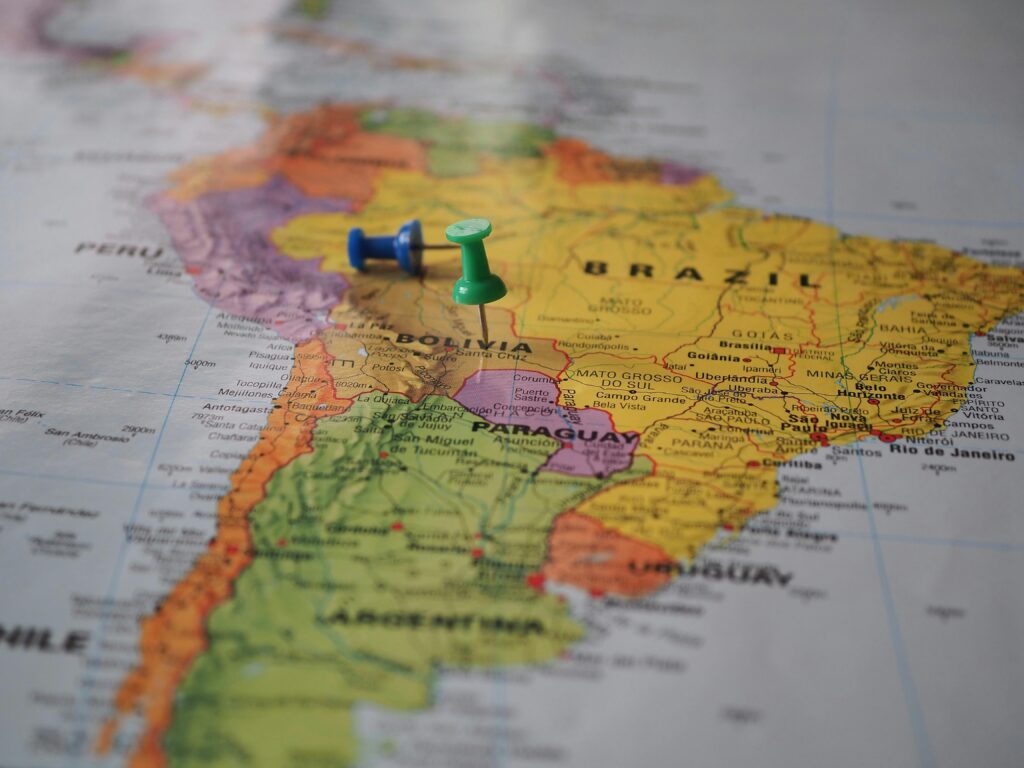Latino Muslims are The Fastest Growing Group of Muslims in the United States
By: Wendy Díaz
Jan/Feb 25

In the September 10, 2024 U.S. presidential debate, both the Democratic and Republican nominees took turns taking shots at one another during primetime. One of the more outrageous claims made during the debate came from Republican nominee and current president, Donald Trump, who alleged that Haitian immigrants in towns like Springfield, Ohio, were eating cats and dogs. This outlandish claim went viral resulting in internet memes, reels, and even catchy musical parodies. But this false assertion was not the first-time that Latin America immigrants became the subject of contentious debate. In his first foray into presidential candidacy, Trump, speaking at Trump Tower in Manhattan on June 16, 2015, claimed, “When Mexico sends its people, they’re not sending their best. . . They’re sending people with a lot of problems. . . They’re bringing drugs, they’re bringing crime, they’re rapists.” Such inflammatory and hateful rhetoric fuels Hispanophobia, an irrational fear, hatred, or bias against people of Hispanic or Latino origins.
Among Muslim Americans, the ummah is diverse; various ethnic groups coexist under the banner of Islam. However, just because Islam emphasizes equality does not mean that prejudice is nonexistent amongst Muslims. In a society where leading politicians fan the flames of bigotry, it is common to see the same type of prejudice manifested in religious spaces. For Latino Muslims, these prejudices can take various forms, from microaggressions to the lack of inclusion of Latinos in leadership or decision-making roles within Islamic institutions.
Prejudices often come from a lack of understanding or exposure and Muslims from immigrant backgrounds may be less familiar with Latin Americans compared with other American communities. Stereotypes about Latino Muslims often contribute to a limited perception of their role within the community, including assumptions about their level of religiosity, education, and/or their socioeconomic status. Likewise, the broader American Muslim community may experience separation from their Latino neighbors due to competition for communal resources, differences in historical struggles, and/or misunderstandings stemming from linguistic barriers.
The Institute for Social Policy and Understanding’s (ISPU) American Muslim Poll 2019 survey showed that Latino Muslims are the fastest growing group of Muslims, making up 8% of the Muslim American landscape. Yet despite the growing number of Latino Muslims, discrimination and lack of awareness about the Islamic influence on Latin America persists. Many Latino Muslims find themselves having to navigate a space where they are either assumed to be newcomers to the faith or perceived as less authoritative in Islamic matters because of their cultural background. This erasure of Latino Muslim identity reinforces the idea that Islamic knowledge and leadership are reserved for certain ethnic groups, a misconception that runs counter to the universal message of Islam. Additionally, language barriers can exacerbate these feelings of exclusion when resources are unavailable in Spanish, leaving Latino Muslims feeling discouraged and disconnected.
To combat Hispanophobia, Muslims everywhere should be reminder of Islam’s teachings on racial equality. In the Prophet Muhammad’ final sermon (salla Allahu ‘alayhi wa sallam) he declared that no Arab has any superiority over a non-Arab and vice versa demonstrating that racial and ethnic biases are alien to Islam. To continue to resist Hispanophobia, this message must be regularly reinforced, not only during the Friday sermon but through everyday interactions.
Islam’s Historical Ties to Latin America

The historical presence of Muslims in places like the Iberian Peninsula (where Muslims ruled from 711 to 1492) profoundly influenced art, architecture, language, and culture throughout Latin America. But connections between Islam and Latin America go beyond the Iberian Peninsula. North and West Africa also played significant roles in shaping Latin American history, particularly through the Transatlantic Slave Trade, which brought enslaved Africans, including many Muslims, to the Americas. This African Muslim influence, deliberately erased by colonial powers, left its mark on cultural and spiritual practices throughout the Americas. Additionally, waves of South Asian and Middle Eastern immigration to Latin America in the late 19th and early 20th centuries introduced additional Islamic influences, as migrants from countries like India, Lebanon, Syria, and Palestine became integral parts of Latin American society. These migrations continue to this day, contributing to the presence of millions of Muslims in Latin America.
Currently, Latino Muslim organizations are serving their communities in Islamic centers, as Latino imams, and as Muslims activists, contributing positively to the American Muslim community. These contributions must be acknowledged and celebrated as they provide models of leadership, activism, and scholarship that enrich the broader Muslim American discourse while also combating Hispanophobia throughout the country. By educating Muslim Americans on these shared historical and cultural links, we can foster a greater sense of connection between Latino Muslims and the rest of the ummah.
Growing Visibility
Every year, there are Latino Muslim events in New York, Texas, Georgia, New Jersey, Pennsylvania, California, and beyond, reflecting the Latino Muslim community’s vibrant growth across the U.S. These events range from cultural celebrations to conferences and educational seminars, providing spaces for Latino Muslims to connect, learn, and contribute to the ummah. In parallel, new organizations continue to emerge and to serve their communities through social work, dawah, education, and publishing. Organizations such as the Latina Muslim Foundation in San Diego, Ojalá Foundation in Chicago, the Latin American Institute of Muslim Women (ILMM) in Atlanta, and IslaminSpanish in Houston are examples of Latino-led initiatives dedicated to outreach, community development, and educational programs.
Additionally, Islamic educational institutions in the U.S. such as Zaytuna College, Bayan Islamic Graduate School, Qalam Institute, and Mishkah University, have seen an increase in Latino representation among their student bodies. Students attending these institutions are actively engaging with Islamic scholarship gaining the knowledge and skills needed to contribute meaningfully to their communities. Upon completion of their studies, these students, will have mastered Arabic and become familiar with sacred Islamic texts. They can then return to their communities to teach and provide guidance grounded in both Islamic tradition and a Latino cultural understanding.
Allies and Friends
Latinos and Muslims often live side by side in cities like New York, Chicago, Los Angeles, Houston, Dallas, and San Diego. Naturally, this proximity leads to interactions and shared experiences through positive curiosity and productive dialogue. As a result, many Latinos in the United States can explore Islam through their relationships with Muslim neighbors, friends, classmates, and co-workers. In these environments, exposure to Islamic practices and values becomes a catalyst for Latinos to explore the faith more deeply.
It is no surprise, therefore, that cities with the largest Muslim populations also have the highest numbers of Latino Muslim converts. Active community outreach, dawah efforts, and resources like Spanish language Quran translations have helped bridge the gap for those interested in learning about Islam. Organizations like IslaminSpanish in Houston provide vital support for Latino converts, making the transition smoother by offering culturally relevant guidance. This growing connection between Muslims and Latinos, particularly in cities with large Muslim communities, is driving a notable rise in Latino Muslim conversions.
The ISPU report, “Latino Attitudes Toward American Muslims and Islam,” revealed a nuanced view that can serve as a foundation for fostering understanding and collaboration between Latino and Muslim communities. It indicates that Latinos generally exhibit lower levels of Islamophobia compared to other racial and ethnic groups in the United States. Participants in the study frequently identified commonalities between their immigrant experiences and those of American Muslims, to include aspirations for liberty, a desire for financial stability, and a better life for future generations. Moreover, the report highlights the importance of personal interactions in shaping positive attitudes and identifies many Latinos reporting meaningful relationships with Muslim Americans.
The report goes on to suggest that educational initiatives providing foundational knowledge about Islam can significantly alter perceptions. For example, when participants were exposed to information about the pillars of Islam and the experiences of Muslim women, they were more likely to view Islam as a faith with similarities to their own beliefs. By amplifying Latino voices and experiences in mosque activities and leadership, Islamic communities can cultivate a more inclusive atmosphere that honors diversity and promotes unity.
Suggested Ways to Build Relationships
Building fruitful relationships with the Latin American community, starts with creating spaces for open dialogue and meaningful interactions. Mosques and Islamic organizations can play a pivotal role in this process by hosting cultural exchanges, offering Spanish language resources, and engaging in outreach specifically tailored to Latino communities. Inviting Latino Muslim speakers and subject-matter experts to Islamic conferences, educational events, and community gatherings also ensures that the voices and contributions of Latino Muslims are amplified and celebrated. Additionally, sponsoring Latino Muslim students and volunteers to pursue Islamic education, locally or abroad, helps empower the next generation of leaders, scholars, and community advocates. These efforts can combat the isolation that Latino Muslims may feel and build solidarity with non-Muslims who may harbor misconceptions about Islam. By focusing on shared values, Muslims can build bridges that dismantle prejudice and highlight the diversity that strengthens the ummah.
Addressing Hispanophobia within the Muslim community requires intentional efforts to reflect on our own biases and to take active steps to uplift Latino Muslims. When we create communities that honor the diversity of the ummah and actively work to erase prejudices, we can not only better represent Islam’s values but also build more inclusive, empowered, and united Muslim communities. The findings from the ISPU research emphasize this potential for collaboration and cooperation. By recognizing shared experiences and fostering open dialogue, we can combat not only Hispanophobia and build a more cohesive and resilient community where all individuals, regardless of their background, can thrive together in mutual respect and understanding.
Wendy Díaz, a Puerto Rican Muslim writer, poet, translator, and children’s book author, is the Spanish content coordinator for ICNA-WhyIslam. She is also the co-founder of Hablamos Islam, a nonprofit organization that produces educational resources about Islam in the Spanish language.